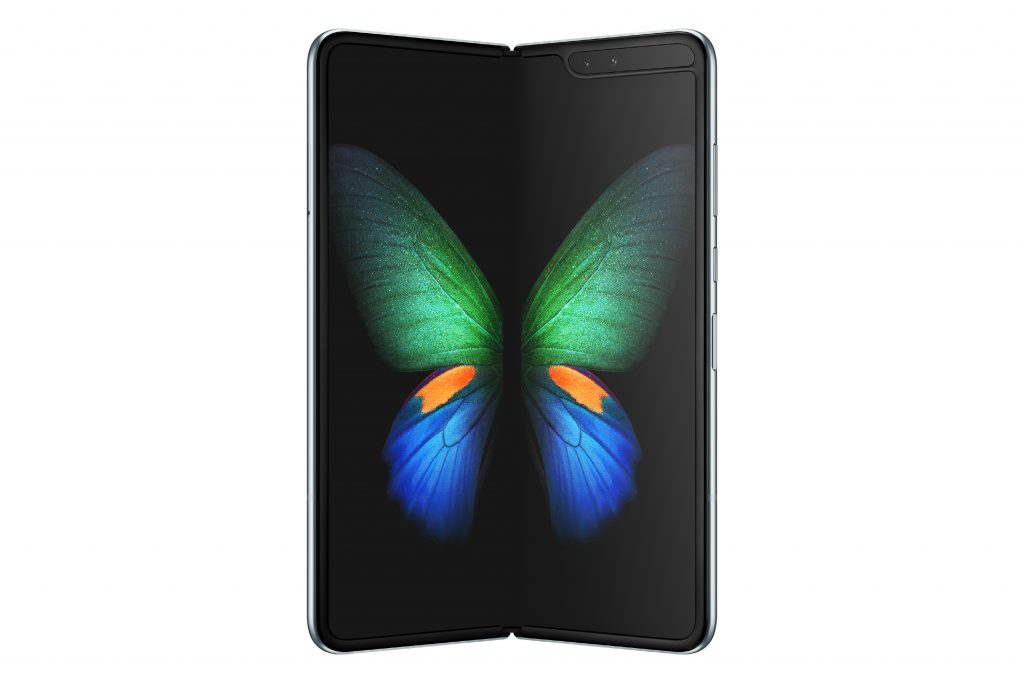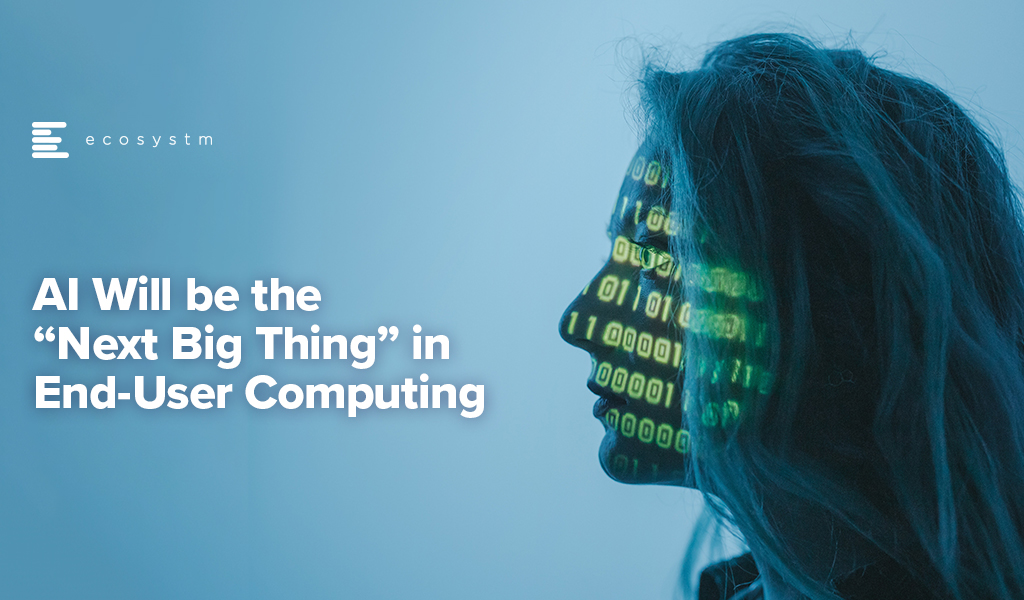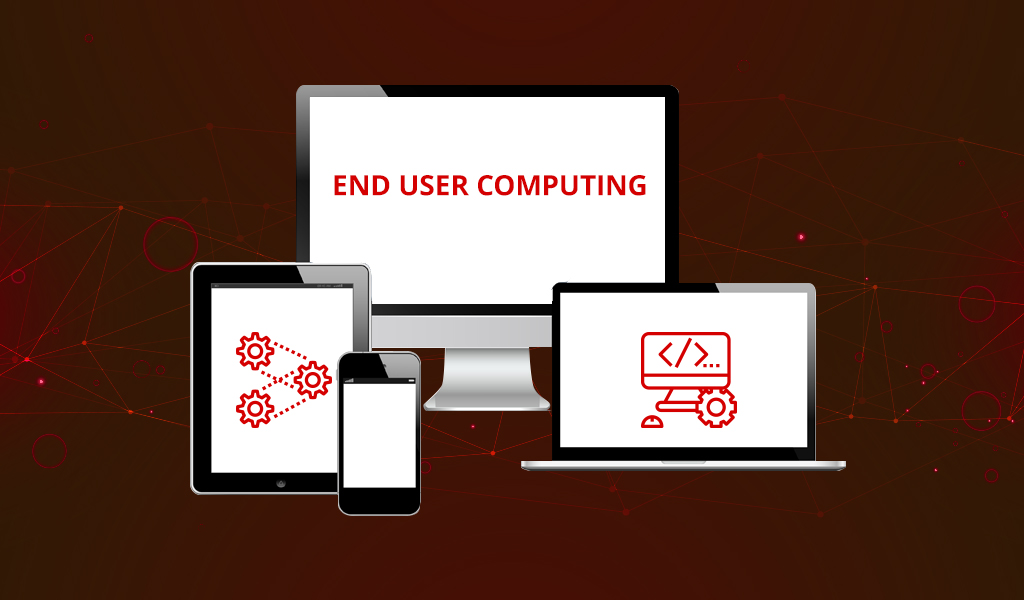I have spent many years analysing the mobile and end-user computing markets. Going all the way back to 1995 where I was part of a Desktop PC research team, to running the European wireless and mobile comms practice, to my time at 3 Mobile in Australia and many years after, helping clients with their end-user computing strategies. From the birth of mobile data services (GPRS, WAP, and so on to 3G, 4G and 5G), from simple phones to powerful foldable devices, from desktop computers to a complex array of mobile computing devices to meet the many and varied employee needs. I am always looking for the “next big thing” – and there have been some significant milestones – Palm devices, Blackberries, the iPhone, Android, foldables, wearables, smaller, thinner, faster, more powerful laptops.
But over the past few years, innovation in this space has tailed off. Outside of the foldable space (which is already four years old), the major benefits of new devices are faster processors, brighter screens, and better cameras. I review a lot of great computers too (like many of the recent Surface devices) – and while they are continuously improving, not much has got my clients or me “excited” over the past few years (outside of some of the very cool accessibility initiatives).
The Force of AI
But this is all about to change. Devices are going to get smarter based on their data ecosystem, the cloud, and AI-specific local processing power. To be honest, this has been happening for some time – but most of the “magic” has been invisible to us. It happened when cameras took multiple shots and selected the best one; it happened when pixels were sharpened and images got brighter, better, and more attractive; it happened when digital assistants were called upon to answer questions and provide context.
Microsoft, among others, are about to make AI smarts more front and centre of the experience – Windows Copilot will add a smart assistant that can not only advise but execute on advice. It will help employees improve their focus and productivity, summarise documents and long chat threads, select music, distribute content to the right audience, and find connections. Added to Microsoft 365 Copilot it will help knowledge workers spend less time searching and reading – and more time doing and improving.
The greater integration of public and personal data with “intent insights” will also play out on our mobile devices. We are likely to see the emergence of the much-promised “integrated app”– one that can take on many of the tasks that we currently undertake across multiple applications, mobile websites, and sometimes even multiple devices. This will initially be through the use of public LLMs like Bard and ChatGPT, but as more custom, private models emerge they will serve very specific functions.
Focused AI Chips will Drive New Device Wars
In parallel to these developments, we expect the emergence of very specific AI processors that are paired to very specific AI capabilities. As local processing power becomes a necessity for some AI algorithms, the broad CPUs – and even the AI-focused ones (like Google’s Tensor Processor) – will need to be complemented by specific chips that serve specific AI functions. These chips will perform the processing more efficiently – preserving the battery and improving the user experience.
While this will be a longer-term trend, it is likely to significantly change the game for what can be achieved locally on a device – enabling capabilities that are not in the realm of imagination today. They will also spur a new wave of device competition and innovation – with a greater desire to be on the “latest and greatest” devices than we see today!
So, while the levels of device innovation have flattened, AI-driven software and chipset innovation will see current and future devices enable new levels of employee productivity and consumer capability. The focus in 2023 and beyond needs to be less on the hardware announcements and more on the platforms and tools. End-user computing strategies need to be refreshed with a new perspective around intent and intelligence. The persona-based strategies of the past have to be changed in a world where form factors and processing power are less relevant than outcomes and insights.

Today Samsung announced their new “Samsung Galaxy Fold” device – and while it won’t be available until at least April 26. This foldable hybrid phone/tablet device is not the first foldable phone – but it will likely be the first one to have mass market availability and will be the first that businesses consider deploying.
But what is the business opportunity for the Samsung Galaxy Fold? It is not a slim, sexy phone, and it is not a large screen tablet like an iPad or Galaxy Tab S4 (although the screen is actually bigger than the smaller screen Tab A 7” tablet). It will be an expensive device (US$1,980) – but depending on the configuration will likely be cheaper than a high-end phone plus a high-end tablet. It doesn’t come with a stylus, but has the ability to help users multi-task (supporting up to three apps at the same time) and also supports DeX – Samsung’s under-rated ability to turn the phone into a PC-like experience. It also supports Samsung Knox, so the security capabilities that Samsung is becoming well known for will be supported by the Galaxy Fold.

Initially, it looks like a device that could replace the “phone and tablet” combination, but the reality is that many of the types of role that have both devices (engineers, repair people etc) typically require ruggedized devices – even a white goods repair person is working in wet and dirty environments and would at least have some type of case on their device. The unique nature of the Galaxy Fold likely prohibits a ruggedized case – and possibly any case at all (as the fingerprint sensor is on the side of the device).
A “Shareable” Device
One factor that strikes me about the Fold is the fact that large screens not only make content easier to consume – but also easier to share. Travelling salespeople – who typically do meetings in cafes or offsite meeting rooms often pull out their tablet or laptop to demonstrate a product or show a presentation or video. Laptops are not great for this – as the interface is designed for one user – not multiple, and many don’t have 4G connections.
You often see software salespeople pull out their tablet to demonstrate their SaaS platform – so this is one of the use cases for the Galaxy Fold – it is a pocketable tablet that has 4G (or 5G) connectivity. Any situation where a white collar executive is sharing information is a potential opportunity for the Galaxy Fold. Only time will tell whether such executives are willing to accept the compromises (thicker device, smaller front screen).
The Ultra-Portable Laptop
The Fold could be the device that shows the real benefit of Samsung DeX – the extra memory and processing power might convince some businesses or end-user computing teams to dump the laptop for some of their employees – and give them a device that can be a phone, tablet and PC. Carrying your laptop between work and home in your pocket might be an attractive option for some users.
An Executive Status Symbol
The Fold will make its way into the senior management ranks too. The device will draw attention and interest – so those who seek such attention will be drawn to it. But if you look around the senior executive community you see those who don’t mind having a larger device in their pocket normally do so because they have covered the phone in a massive “Otter Box” case – they are looking to protect their asset – again the lack of protection may be an inhibitor for this buyer. And the other execs who like a slim, sexy device may be put off by the size. It is hard to know exactly where the Galaxy Fold will land.
Whatever happens, it is great to see the rate of innovation in the smartphone market start to accelerate again after 3-4 years of stagnation. From an engineering and design perspective, the Fold looks incredible. What role it takes in the end-user computing strategy of businesses across the globe isn’t yet clear – but the idea of a device that helps your business users better share content could certainly be an opportunity.
If you’d like to discuss your End User Computing strategy feel free to reach out to me at: tim.sheedy@ecosystm360.com – or if you have any thoughts of other use cases for the Samsung Galaxy Fold please post them in the comments below – let’s keep the conversation going!
For most companies, End-User Computing (EUC) is considered an expense to the business. EUC strategies are typically exercises in cutting costs – with often not much more than lip service given to the needs of employees (or employee personas). I know – I help companies write these strategies, and the costing component is always the piece that gets the strategy over the line.
But the winds are changing. Employee Experience (EX) is taking off as a serious business initiative. For example:
- Edmunds.com wrapped the traditional Facilities and Human Resources functions into a combined WEE Team which represents Workplace and Employment Experience. They engaged in a campaign to rid the company of the term “Human Resources”
- Airbnb has a dedicated team to “drive the company’s health and happiness”
- Nitro has “turned old-school HR on its head and instead created Employee Experience (EX)
In our upcoming CX research, the early data is showing that EX is the number two initiative for businesses across the globe in 2019. And for information workers, the technology that sits in front of them is a HUGE component of their experience – and their ability to get and stay productive.
Productivity Should Be The Focus Of Our EUC Strategies
Smart businesses understand that. They allow employees to choose (or bring) the devices that they need to remain productive. While desktop PCs might not be making a comeback, they are increasingly being adopted as an alternative to the “laptop as one device” strategy that many businesses embrace. Sometimes a powerful computer with a big screen (or multiple screens) is what people need to get the job done. Other times a small form factor desktop is perfect. Employees may need tablets or smartphones. And other times they need regular laptops, convertibles, or 4G connected laptops. Smart businesses also focus on seamless security – knowing that security is a key enabler of productivity. We are seeing that “The best, most secure device for the job” is taking off as a EUC hardware strategy in businesses that are striving to build a productive and enjoyable employee experience. This helps them to keep employees productive and will help them attract and retain the best talent.

And EUC goes beyond the device to the entire user experience
Collaboration initiatives often disappoint. Limited adoption, and limited interoperability between applications limits effectiveness. There is often a disconnection between the collaboration system and how it helps employees hit their goals. Microsoft is currently rebooting its collaboration strategy – and has created a more modern system that more closely mimics the processes of a typical information worker (Teams). Slack is also taking the world by storm – as it is a collaboration tool that helps people the way they work today – it doesn’t require any training.

IT Operations professionals need to take a fresh look at EUC – but this time within the context of the other initiatives in your business. Do you already have a team focusing on EX? Are there initiatives you can help with – or piggyback on? There is real academic research proving the link between happiness and productivity – or the “state of flow”. IT holds the key to productivity – and therefore happiness – for information workers in particular – it’s time to step up and put employee experience and productivity – not costs – at the centre of our IT end-user computing strategies.




